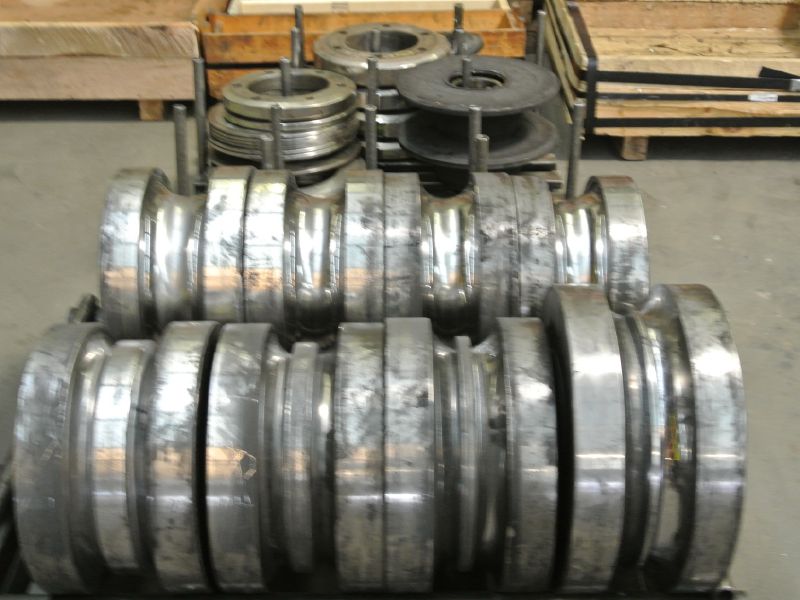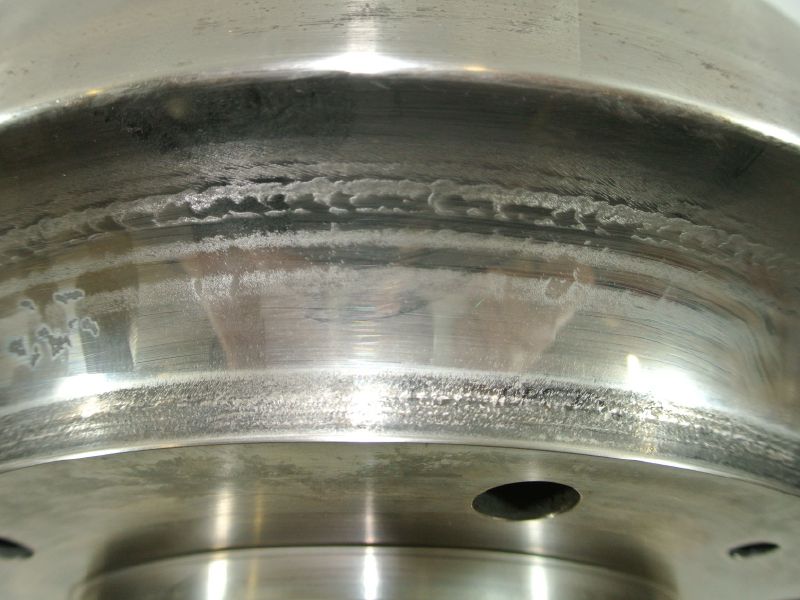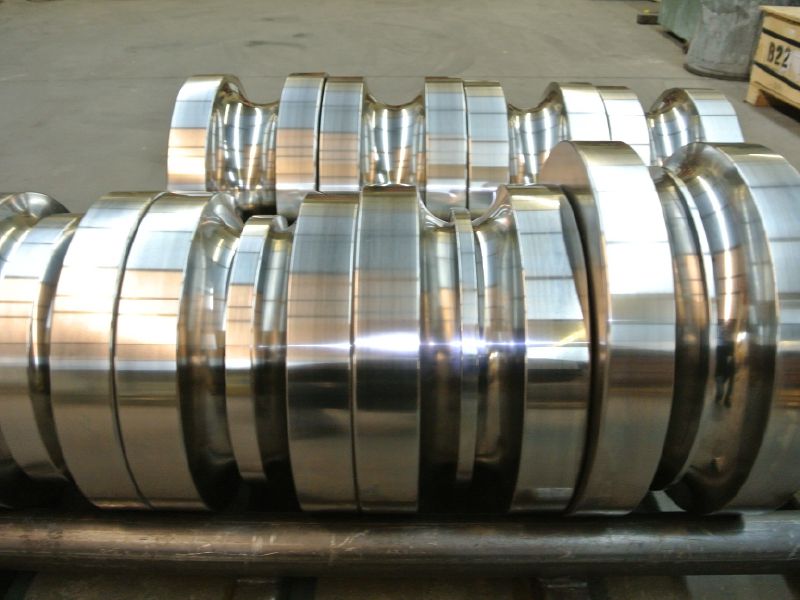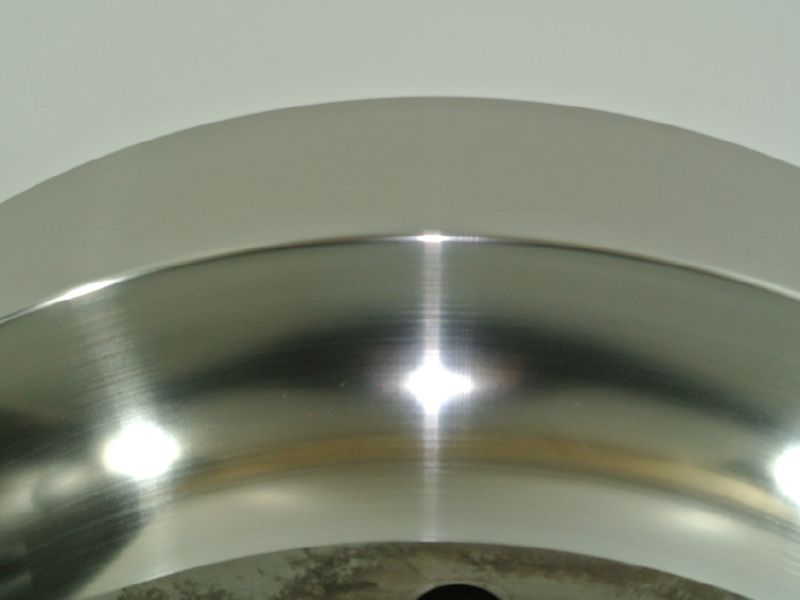Roll Regrinding
Regrinding rolls at correct intervals extends roll life, reduces regrind costs and will result in higher average tubing quality over the life of the tooling. Postponing roll regrinding until the rolls produce scrap or until structural failure occurs in the roll is the most costly form of tooling maintenance.
Roll regrinding serves two purposes. The first and most obvious is to restore the forming surface of the roll to its original shape thus restoring the roll to its original performance levels. During this process care must be taken to coordinate drive diameters and tube height tracking through the mill. When roll sets are reground we always provide new set up charts reflecting all mill settings based upon roll diameter changes. Setting up the mill with these charts assures the operator that the tube is following a straight line through the mill. Many forming problems can be created when the tube is forced off track as a result of inadequate set up data. Our goal is always to give the shop floor people the highest quality tooling backed by the information necessary to properly use that tooling.
The second purpose for regrinding tube mill rolls is less apparent and a little more technical. As the strip passes across each roll a pressure wave is generated within the roll at the area of contact. Because the roll is rotating the pressure wave is in effect continuously traveling around the forming surface of the roll. It’s kind of like the flat spot on your tires where they contact the road only more on a molecular level. Because your rolls are a little less flexible than your tires the molecular bonds within the roll material are stressed and the forming surface material of the roll eventually starts to crystallize or become brittle. Now introduce a stress riser such as a wear pattern on an upper fin roll or a microscopic surface imperfection and you have the beginning of a crack.
At this point cracks are invisible but continued cycling will gradually cause the fractures to go deeper into the roll and inevitably lead to problems. The most expensive problem is a broken roll because a surface fissure traveled deep into the roll causing structural failure. A good example of this would be the edge breaking off an upper fin roll adjacent to the fin blade. Another issue would be almost complete surface failure. This is when significant work hardened areas of the forming surface become unstable on the molecular level and any disturbance causes failure. I.E. It looks fine but touch it with a cutting tool and it falls apart. This often occurs when regrinding a roll set that has gone too long without a maintenance. Rolls that don’t show excessive wear can be crystallized and as metal is removed cracks will appear and pieces will break out. The only solution when this happens is to remove all of the deteriorated material so that cracks can’t re-propagate.
In this situation the diameter drop can be two to five times what normally would be expected. Thus regrinding rolls at correct intervals extends roll life, reduces regrind costs, and will result in higher average tubing quality over the life of the tooling.
So how do you know when to regrind? Total footage and/or tonnage over roll sets is an indicator that works well if your product is consistently of the same material and gauge range. Templates are visual wear indicators only and will not help determine if there is work hardening or deterioration of the rolls' forming surface. We have found over time that good records that show tooling usage combined with cleaning and visual inspections between runs is the front line of roll maintenance. Another good indicator is to study your regrind reports provided by your roll vendor. Excessive diameter drops and/or notes indicating roll surface degradation can help determine future maintenance policies.

Regrind Before
Regrind After


Regrind Before

Regrind Before
Regrind After

Regrind After


